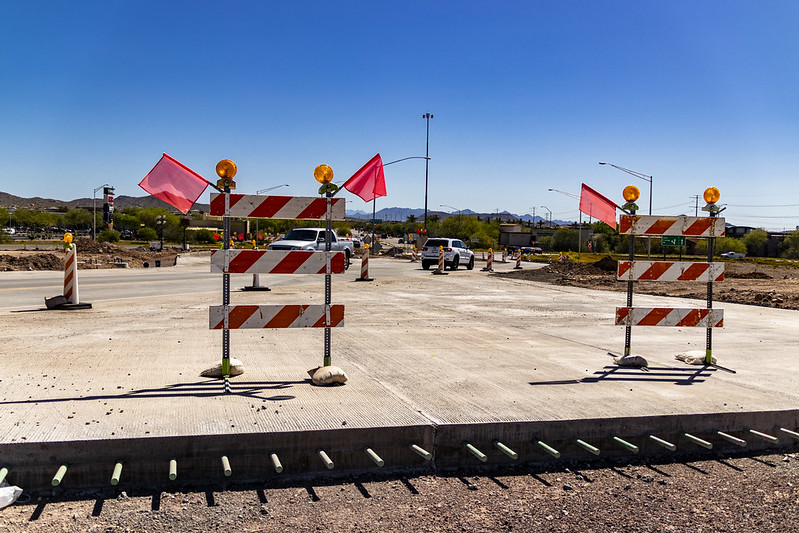Why leaving barriers in place in work zones protects everyone
Why leaving barriers in place in work zones protects everyone

Occasionally, we’re asked why work zones that reduce travel lanes remain in place when crews aren’t present, like during overnight hours.
There are a few reasons, but the primary factor is safety, especially for the traveling public.
Keeping the public and workers safe is ADOT’s top priority. The installation of traffic control devices, including barriers, in work zones helps protect everyone. These barriers remain in place because work zones can have uneven surfaces and other hazards that would make driving in them dangerous when work is not occurring.
While some work zones see work occurring around the clock, breaks occur in some work zones. In most cases, it isn’t feasible – or safe – to remove barriers.
“If crews had to take the traffic control devices down again at night or at a time when a break occurs over a weekend, there’s a good chance the process of setting up again would have to start very close to when the pick-up work just ended,” said Kole Dea, an assistant state construction engineer.
Removing and setting up nightly single- or double-lane closures can cost thousands of dollars.
ADOT has a responsibility to complete projects safely, quickly and on-budget. Leaving barriers in place not only helps keep everyone safer, it helps keep projects on budget and on time.
